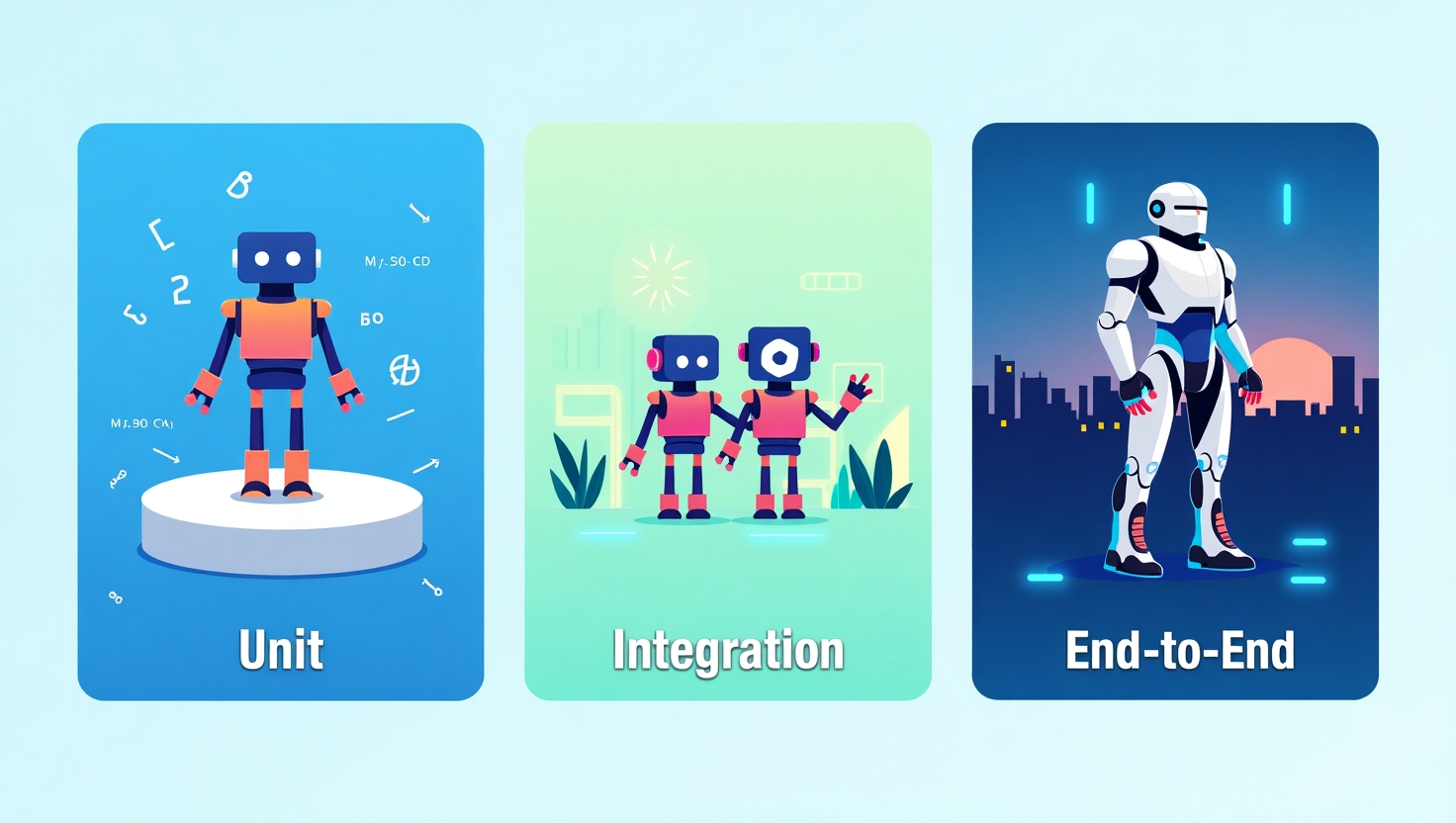1. Unit Testing
What it is:
Unit testing focuses on testing individual, small, and isolated units of code, such as functions, methods, or classes. The goal is to verify that each unit of the software performs as designed. These tests are typically written by developers and are usually automated.
Key Characteristics:
- Small Scope: Tests individual units of code in isolation.
- Fast Execution: Because they test small, isolated parts, unit tests are generally very fast to run.
- Written by Developers: Usually created by the developers who wrote the code.
- Focus on Functionality: Verifies the correctness of specific code logic.
- Easy to Debug: When a unit test fails, it's usually clear where the problem lies.
Pros:
- Early Bug Detection: Helps identify and fix bugs early in the development process.
- Code Refactoring Confidence: Provides assurance that code changes haven't introduced regressions.
- Living Documentation: Unit tests can serve as a form of documentation for how individual units of code are supposed to work.
- Improved Code Design: Encourages developers to write more modular and testable code.
Cons:
- Doesn't Verify Interactions: Doesn't ensure that different parts of the system work together correctly.
- May Not Catch Integration Issues: Bugs that arise from the interaction between units might be missed.
- Can be Time-Consuming to Write: Writing thorough unit tests for all parts of the codebase can take time.
Analogy: Imagine testing each individual ingredient of a cake (flour, sugar, eggs) to make sure they are of the right quality and perform their function correctly before even mixing them.
2. Integration Testing
What it is:
Integration testing focuses on verifying the interactions and communication between different units or components of the software. It aims to uncover issues that arise when these individual units are combined and work together.
Key Characteristics:
- Tests Interactions: Verifies the flow of data and control between different modules.
- Wider Scope Than Unit Tests: Involves testing the integration of two or more related units.
- Can Involve External Systems: Might include testing interactions with databases, APIs, or other external services.
- Slower Than Unit Tests: Integration tests typically take longer to run as they involve more complex interactions.
- May Require Test Doubles: Often uses mocks, stubs, or other test doubles to isolate the components being tested and control their behavior.
Pros:
- Verifies System Interactions: Ensures that different parts of the application work together correctly.
- Detects Interface Issues: Identifies problems with the interfaces and data exchange between components.
- More Realistic Testing: Simulates real-world scenarios involving multiple parts of the system.
Cons:
- More Complex to Set Up: Requires configuring and managing the interactions between different components.
- Harder to Isolate the Cause of Failure: When an integration test fails, it can be more challenging to pinpoint the exact source of the problem.
- Can Be Slower Than Unit Tests: Due to the broader scope and potential involvement of external systems.
Analogy: Imagine testing how the different parts of the cake batter mix together, how the batter bakes in the oven, and how the frosting spreads on the baked cake. You're testing the interactions between these stages.
3. End-to-End (E2E) Testing
What it is:
End-to-End testing aims to simulate the entire user journey through the application, from start to finish. It verifies that the complete system works as expected from the user's perspective. These tests typically interact with the application's UI and backend, mimicking real user actions.
Key Characteristics:
- Tests the Entire System: Covers all layers of the application stack.
- Simulates User Scenarios: Focuses on verifying workflows and user interactions.
- Highest Level of Testing: Provides the most comprehensive validation of the system.
- Slowest Execution: E2E tests are generally the slowest to run as they involve the entire application environment.
- Often Involves UI Automation: Typically uses tools to automate interactions with the user interface.
Pros:
- Verifies the Complete User Experience: Ensures that the system meets the user's requirements and works as expected in real-world scenarios.
- Identifies Issues Across the Entire Stack: Can uncover problems in any part of the application, including the frontend, backend, and database.
- High Confidence in System Functionality: Successful E2E tests provide strong confidence in the overall correctness of the application.
Cons:
- Slowest to Run: Can significantly increase test execution time.
- Complex to Set Up and Maintain: Requires configuring the entire application environment and creating robust test scripts.
- Harder to Debug: When an E2E test fails, it can be challenging to pinpoint the exact location of the bug within the system.
- Can Be Brittle: UI-based tests can be sensitive to changes in the application's user interface.
Analogy: Imagine a customer trying to order the cake online, from Browse the menu to completing the purchase. You're testing the entire process a customer would go through.
Head-to-Head Comparison Table:
| Feature | Unit Testing | Integration Testing | End-to-End Testing |
|---|---|---|---|
| Scope | Individual units of code | Interactions between units/modules | Entire application/user journey |
| Speed | Fastest | Slower than unit, faster than E2E | Slowest |
| Cost to Write | Relatively low | Medium | High |
| Debugging | Easiest | More challenging | Most challenging |
| Confidence Level | High for individual units | High for system interactions | Highest for overall system behavior |
| Who Writes | Developers | Developers, sometimes QA engineers | QA engineers, automation specialists |
Conclusion:
Unit, integration, and end-to-end testing are all critical components of a comprehensive testing strategy. They complement each other by verifying different aspects of the software at various levels of granularity. A well-balanced testing approach that includes all three types provides the best assurance of building high-quality and reliable applications. Ignoring any of these levels can lead to increased risk and potential problems in production. Stay tuned for more Daily Comparisons!
